Aug 6 2017
Sunday – Wonderful Steady State in the double
We drove home from Pardubice in the morning, arriving home around lunch time. It was raining in Brno. Temperatures have dropped by 15 degrees C overnight.
But Romana and I found a window without rain by carefully studying the online weather radar and we used it to the max. It was quite windy and choppy but that didn’t stop us from doing a lot of technique drills. As a result, we managed to row well in the chop and when we reached the quiet areas of the lake, we were flying (at steady state pace).
We got enthusiastic and did a race start, and two race pace intervals of 15 strokes each.
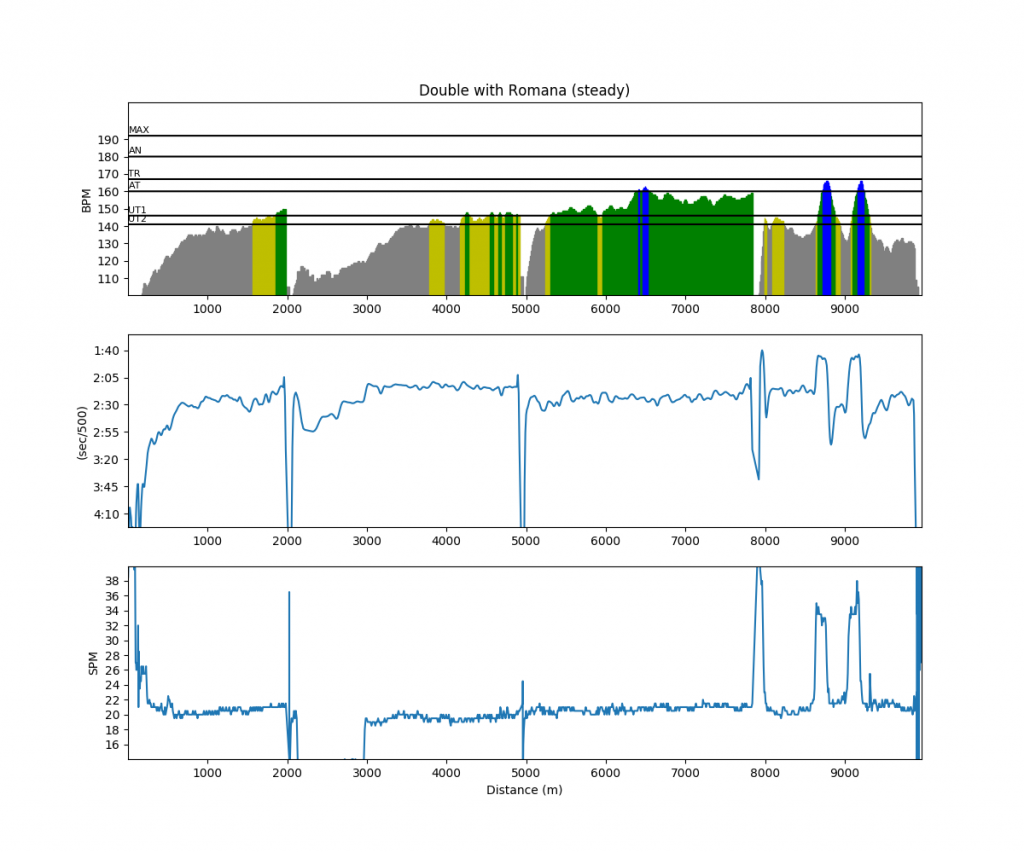
A nice row. When we were cleaning the boat, it started to rain again.
The two rows in the double of this weekend were both great, and they confirmed one thing. As a result of rowing with the Empower Oarlock and the constant direct feedback, combined with the analysis done at rowsandall.com, I have gradually made small incremental changes on my technique, trying to make the boat go faster. Both Romana and Tomas confirmed that I have made a fundamental change in my stroke, and they had to get used to it. But both confirmed that when they managed to fall into the same groove as I, we were going relatively fast.
Rowing in the double without the Empower Oarlock, I set up the SpeedCoach to show meters per stroke. I find that this metric really shows effectiveness of rowing, with two pitfalls:
- Do not compare meters/stroke at different stroke rates
- Do not compare over longer distances
It is a useful metric to monitor stroke to stroke differences at constant stroke rate. In the headwind intervals, we were rowing well when we reached just over 10 meters/stroke at 21 spm. In the tailwind intervals this was about a meter further.
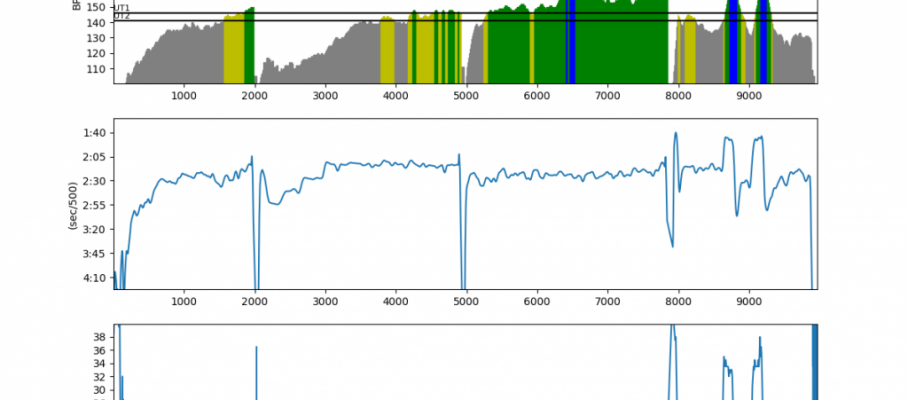
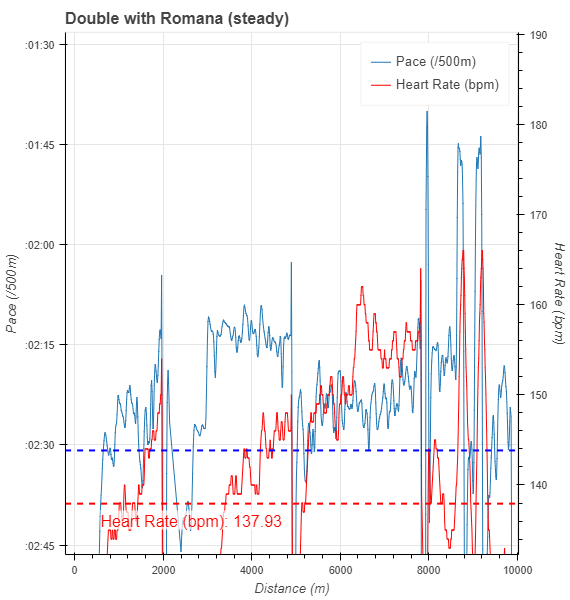
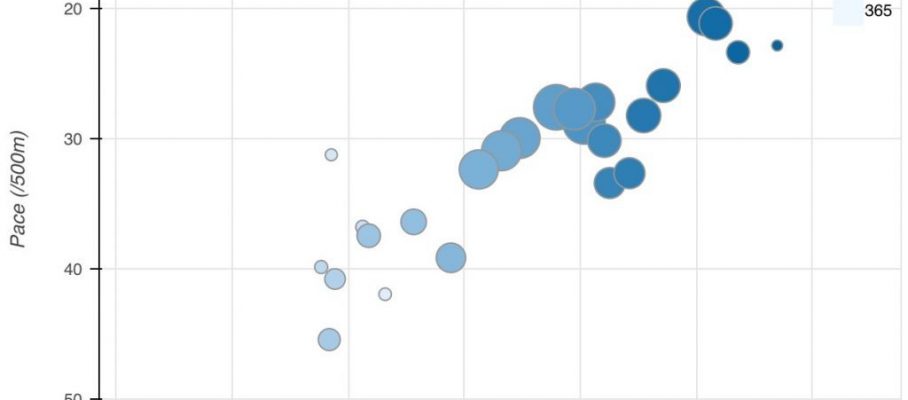
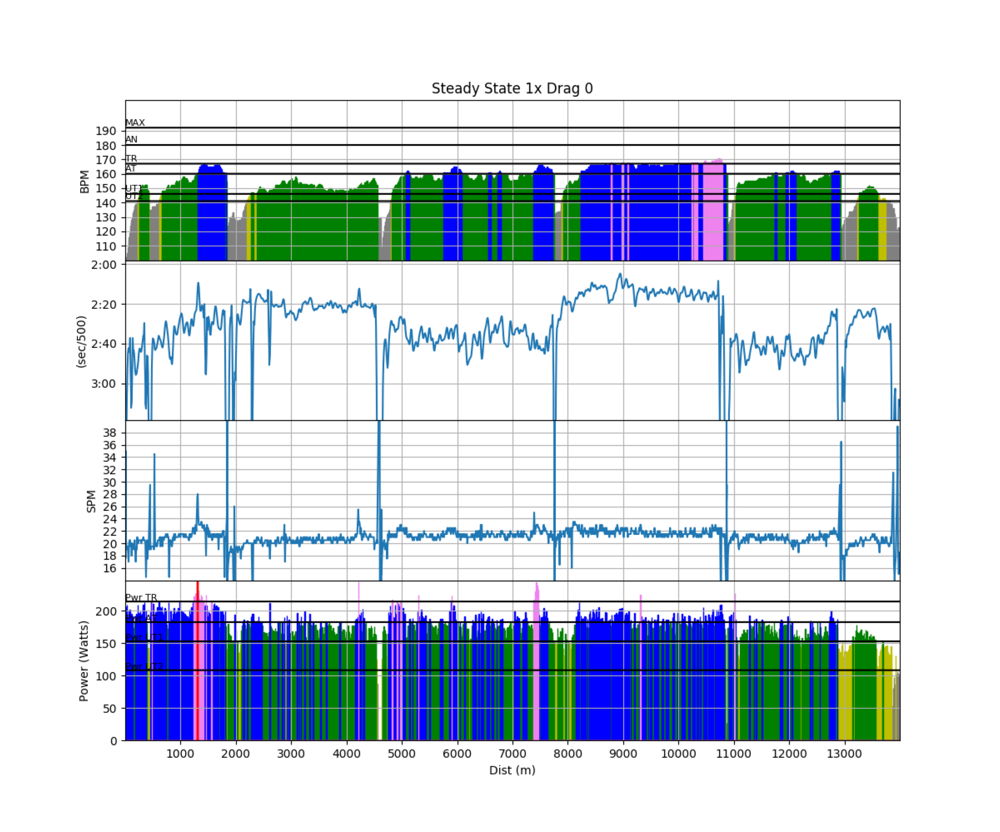
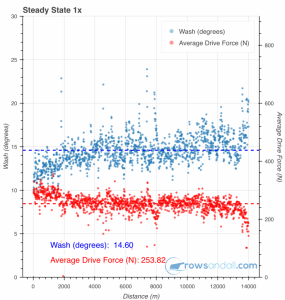
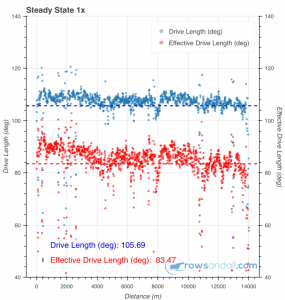
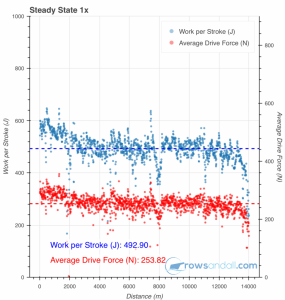

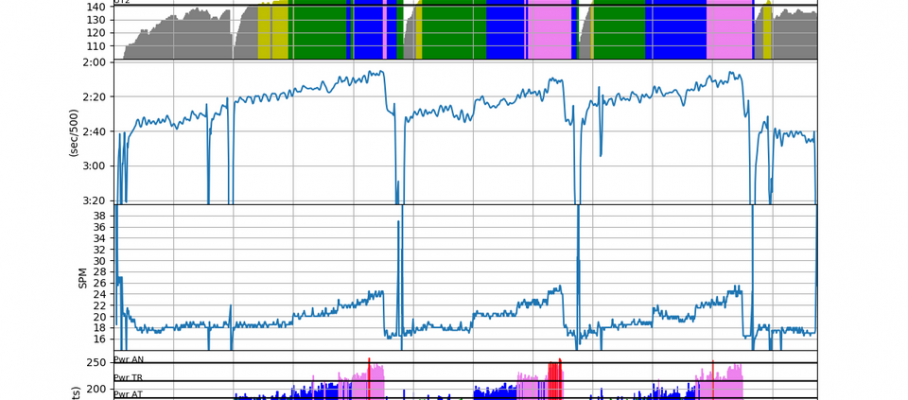
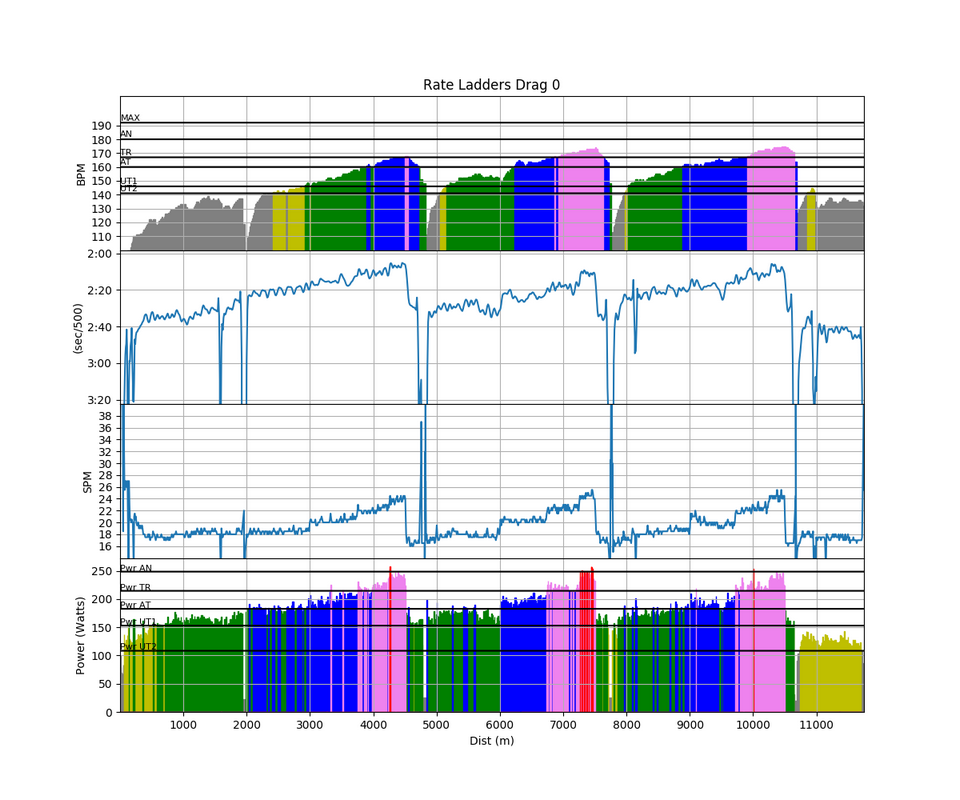
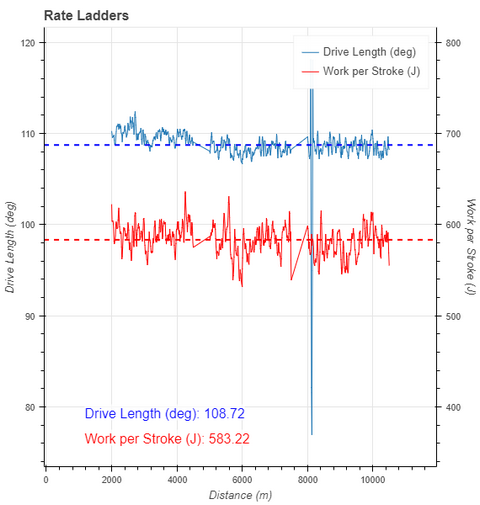
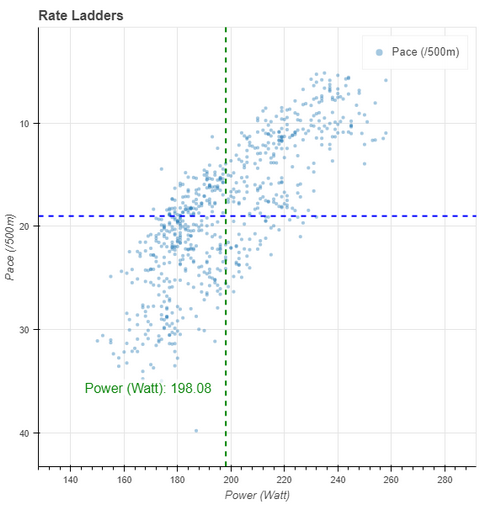
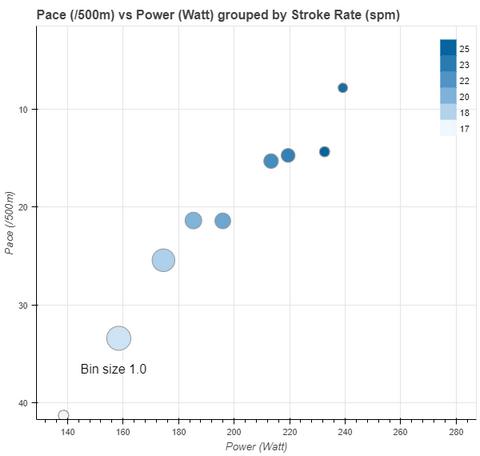
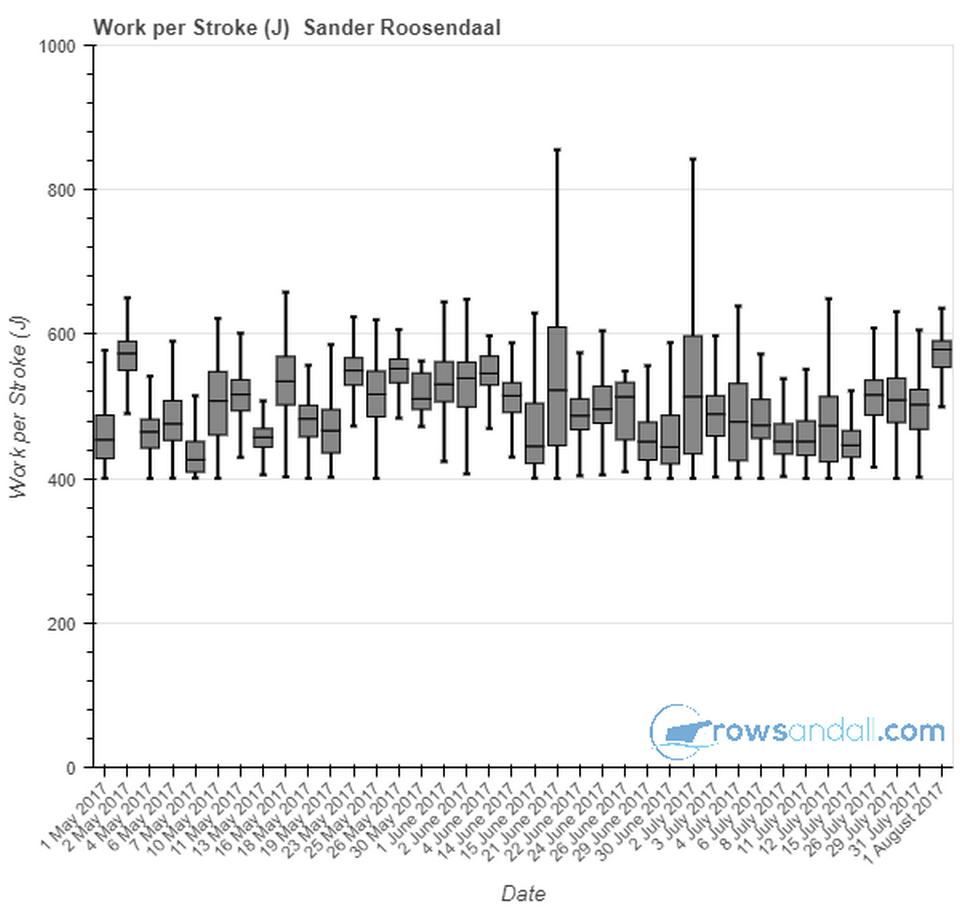
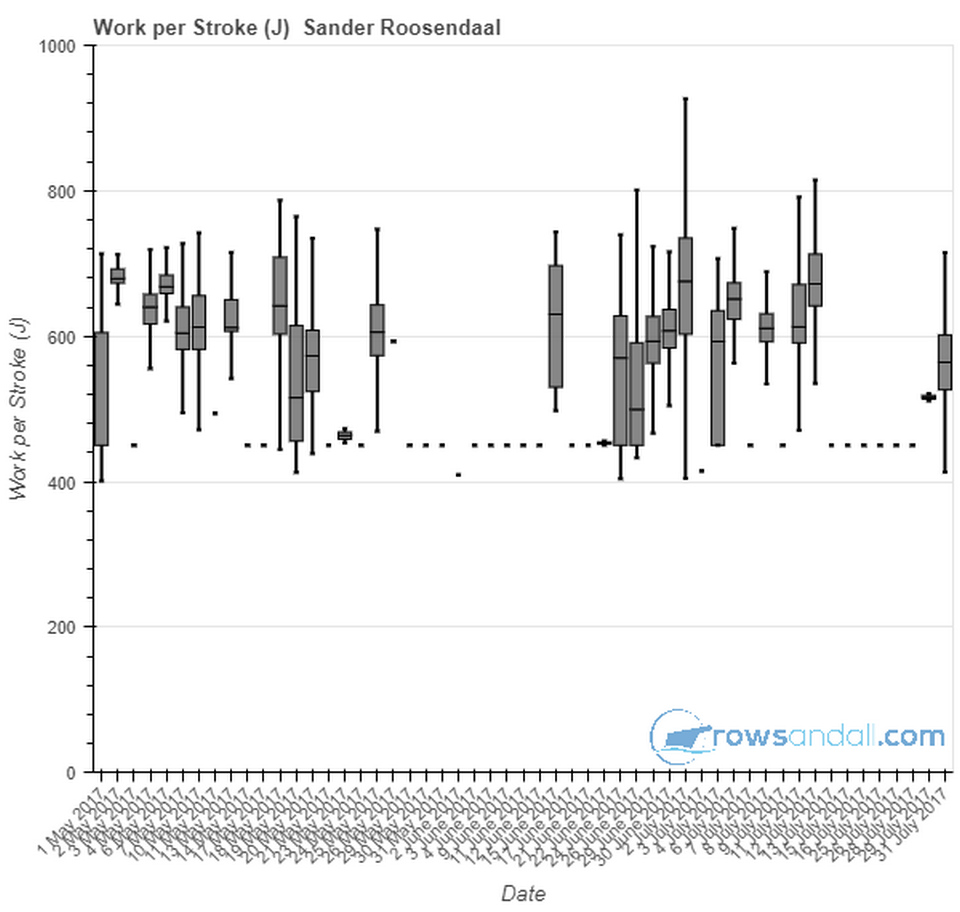
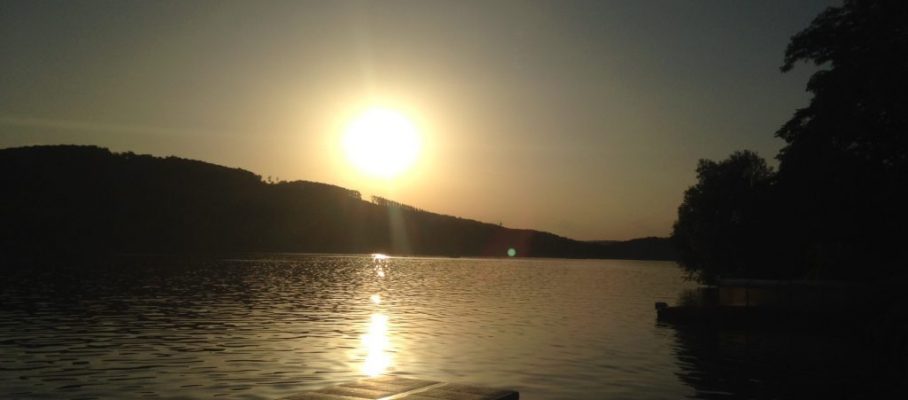
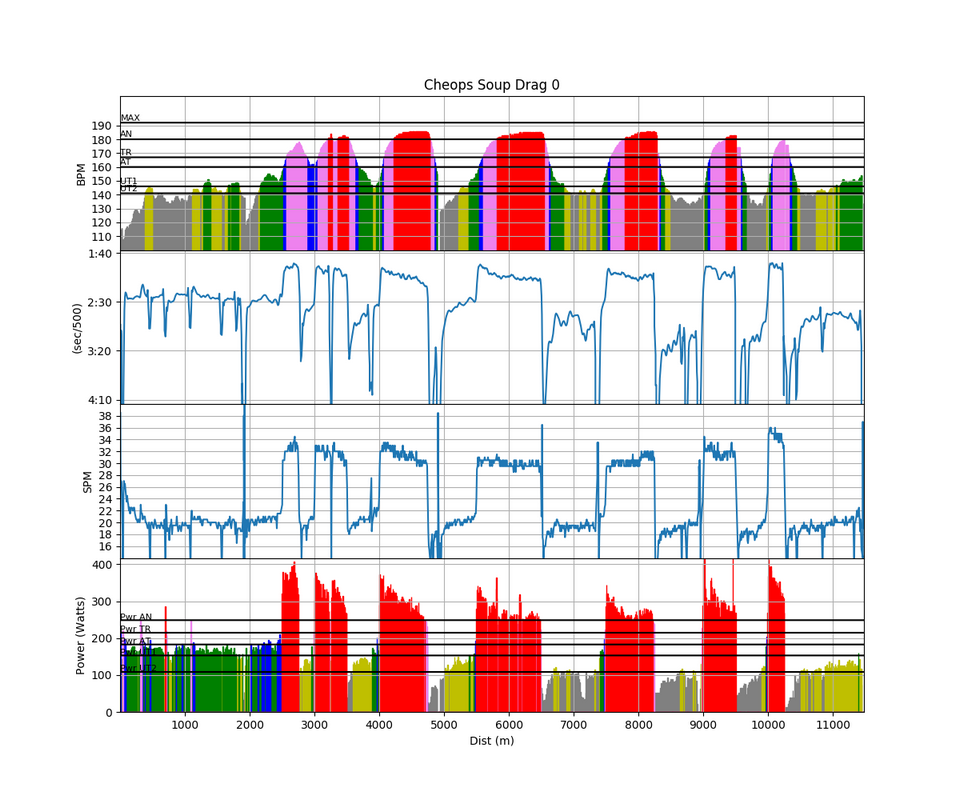
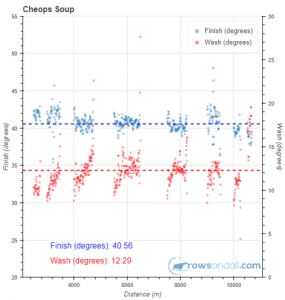
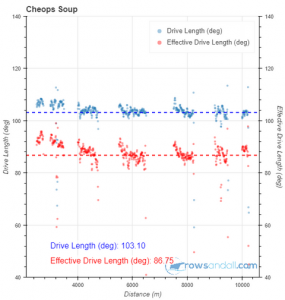
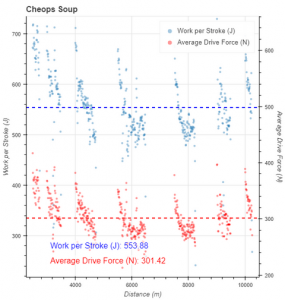
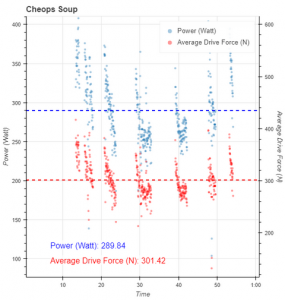
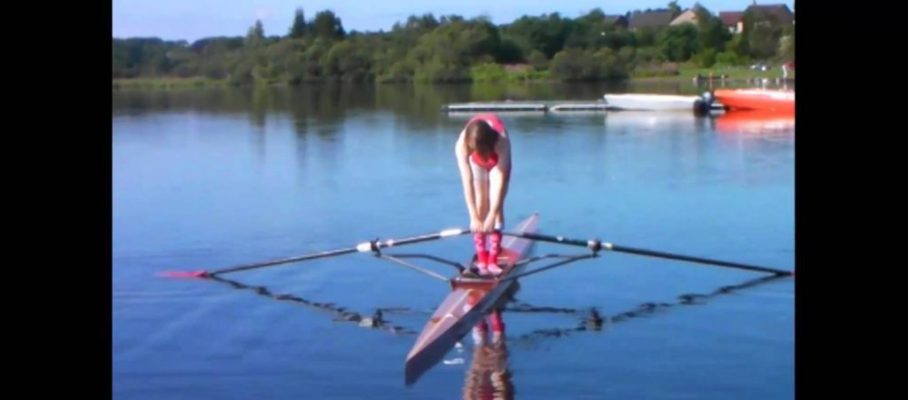
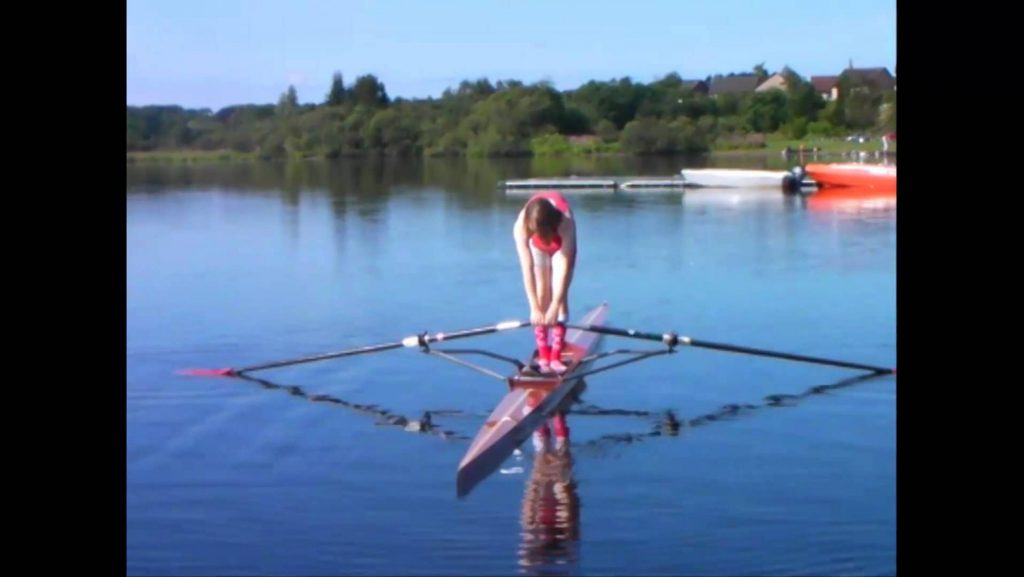
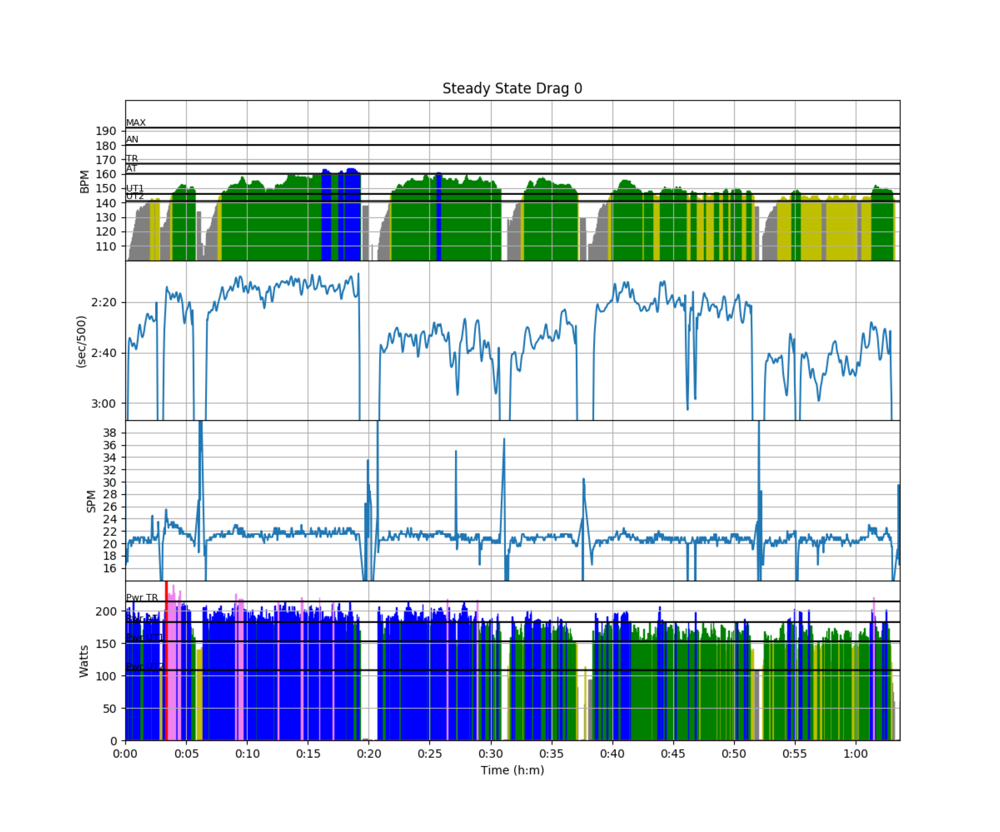

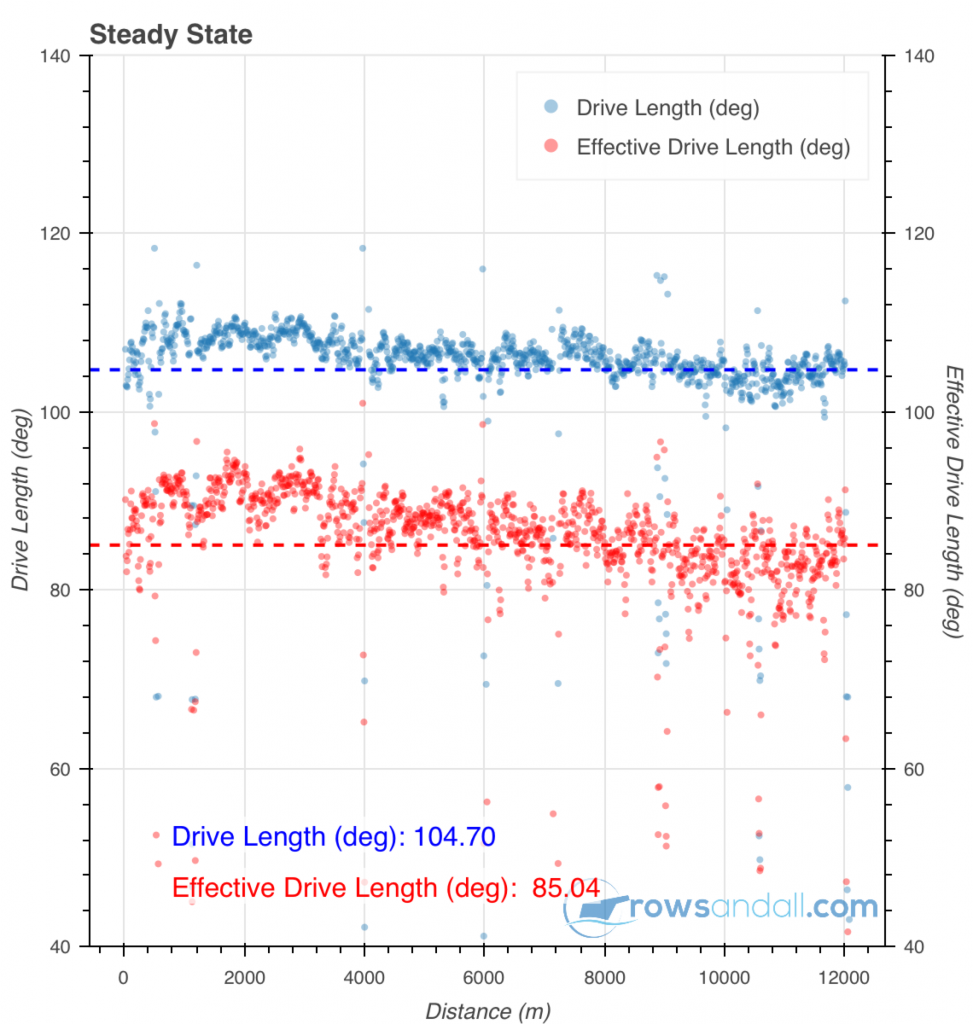
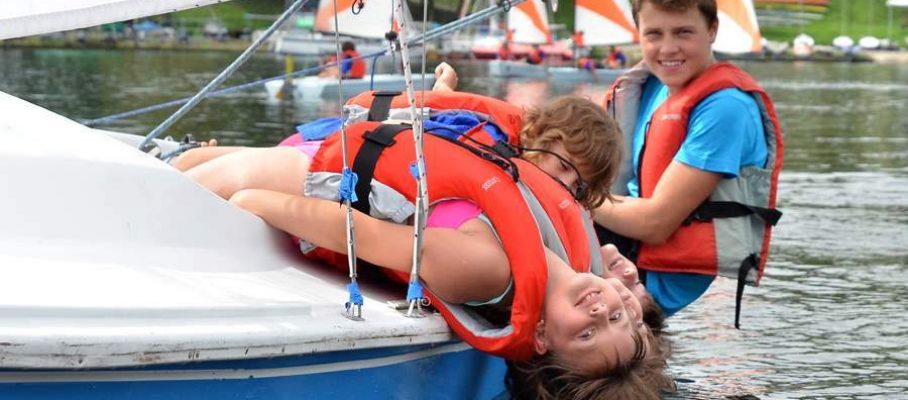
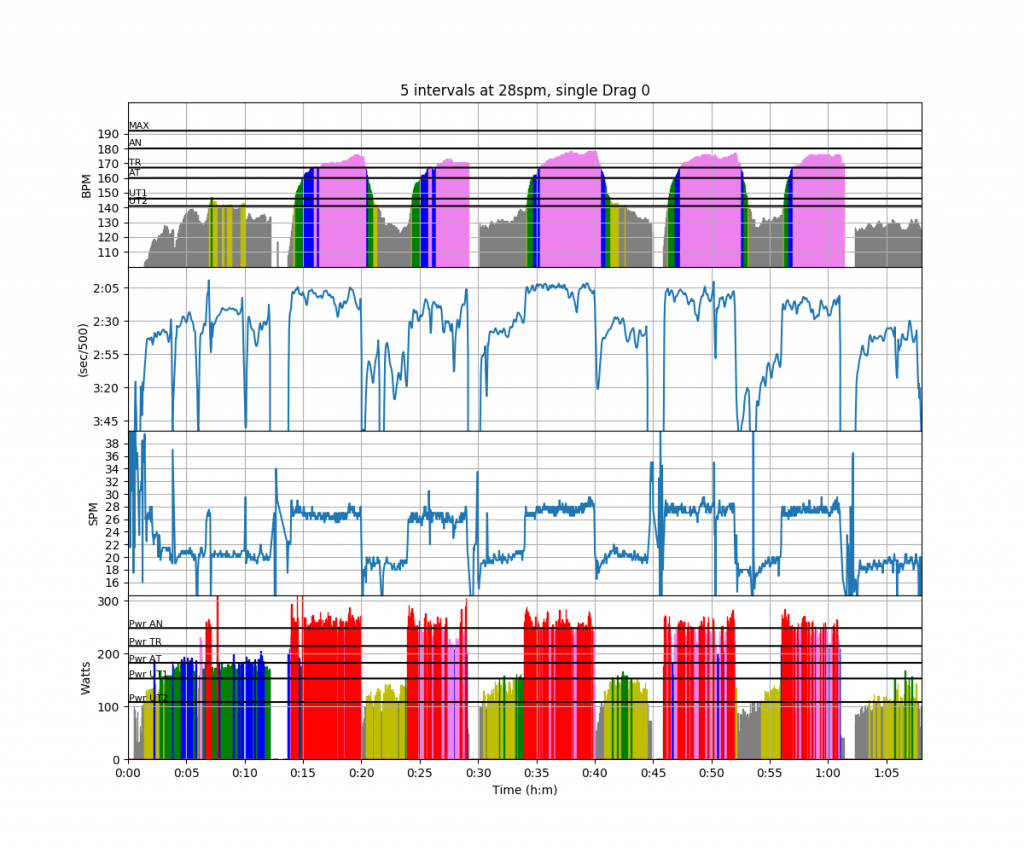
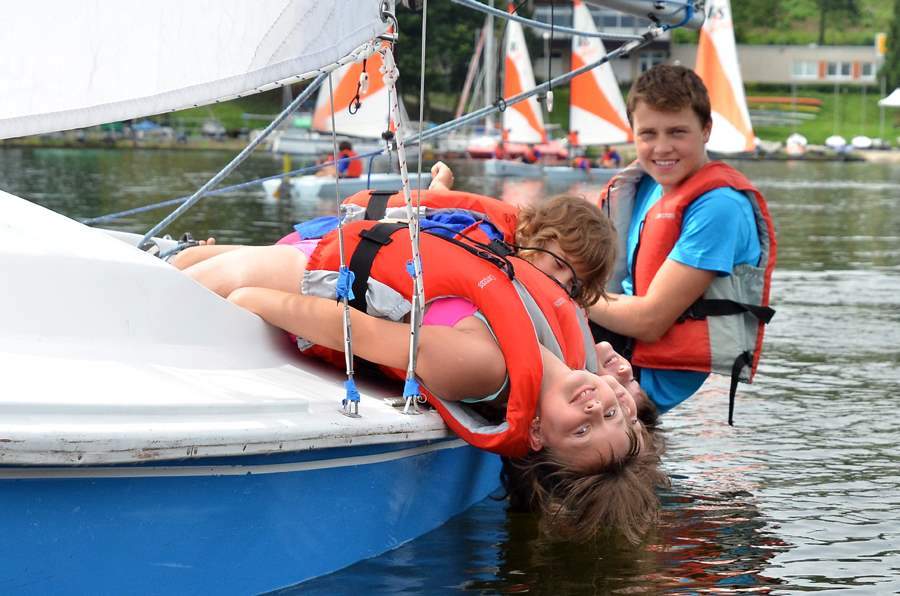
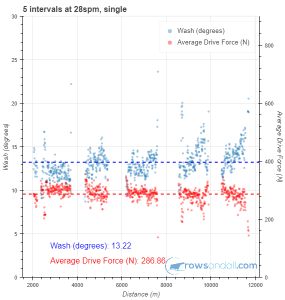
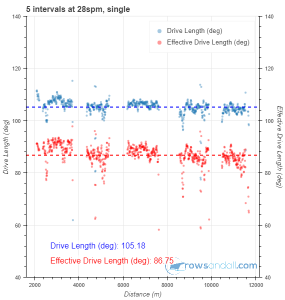
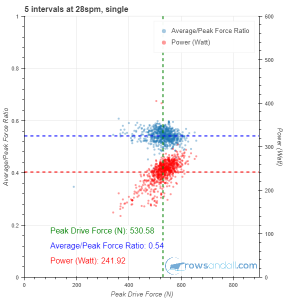
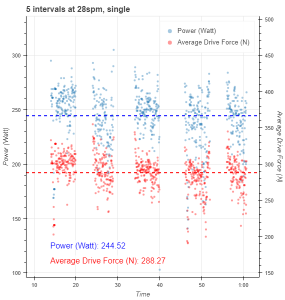
Aug 8 2017
Tuesday – a tough 4x1km on the water
[amazon_link asins=’0544947223′ template=’ProductAd’ store=’rowingdata-20′ marketplace=’US’ link_id=’bed92e4b-7c3e-11e7-bf61-c376ad7ff20a’]
I am reading the book “Peak” by Ericsson and Pool. Interesting stuff. They talk about “deliberate practice”. In summary, deliberate practice involves practicing with well-defined, specific goals, getting constant feedback, and constantly moving a little outside your comfort zone to avoid stagnation.
I think that having a power meter makes it a lot easier to implement “deliberate practice” in rowing.
So for Monday, the training schedule asked for the good old “Pete Plan” classic: The 4x1km at 5 minutes rest. On the erg, I haven’t done this one in a long time. The last one was in September 2015. On the water, I have done a few. Here’s a summary:
So, OTW, should I aim for 2:01 pace? Really, this depends a lot on the weather. Now that I have a power meter, I should really row these workouts to a power target. So, I looked at my CP Chart. A 1k should take me around 4 minutes, roughly, but I was going to do four of them. On the other hand, there was going to be a 5 minute rest period between the 1k efforts. Now, the CP chart tells me that on the water, I should be able to hold 345W for 4 minutes, and 250W for 16 minutes. I “guesstimated” that I should aim for a value in the middle: 300W. I also wanted to row at Work per Stroke (“WpS”) values below 600J. The hypothesis is that this is the most efficient Work per Stroke value for my rowing.
That fixes the stroke rate to 30spm and higher. So, the targets were clear. Now, the execution.
There was some wind when I arrived at the rowing club, and the wind was increasing in strength. During the warming up, I quickly decided to do the 4x1k in the gorge, because if the wind would get any stronger, I would be testing my rough water skills rather than my fitness and rowing efficiency.
Then, it was time to start the series of 1000m intervals. The straightest part of the gorge is about 900m long, and with a slight turn at the end you can call it a 1k effort. The wind would be a straight tailwind and headwind, for the alternating intervals. My first interval was a tailwind one, towards the castle.
As in the previous OTW versions of this workout, I would do all intervals from a static start. I started the first interval way above target power, stroke rate and WpS and had to work hard to reduce them. The average WpS was 614 J, and the interval did get make me tired.
A 5 minute paddle, 2 minutes towards the castle, 30 seconds to turn and drink, 2 minutes back, 30 seconds to align for the start. This time it was a bit easier to hit the WpS values, but about 100m in I was in trouble. I heard a hissing sound right next to my boat, and when I looked, I saw a very angry parent swan and four young swans. I ignored the swans and carried on. Luckily, the swan decided not to charge. Then, 300m into the row, I was in trouble. Deep trouble, that I could not row away from. Pain. Hard breathing. The feeling that this was not a sustainable pace. With 400m to go I had to start counting strokes, and I somehow managed to make it to the end. WpS: 570 J.
In the third, tailwind interval, I decided to ignore the tiredness and rate up. My time equalled that of the first 1k, but I rowed this one at a WpS of 557 J. I also think that the wind was helping me a bit more than in the first interval.
For the last interval, I carefully lined up as far from the swan family as possible, which would make me row a bit more of the turn at the end of the 1k, and started. My suspicions about the wind strength were confirmed immediately as I settled down for 32spm.
I wasn’t able to hold 32spm. I somehow made it to half way rowing slightly under target, power wise, but at that point I had a very serious fight with the “handle down daemons”. If I wouldn’t be a blog writing rower who was rowing to meet a clear target for this session, I doubt if I would have completed this interval. I did dial down the power though, and only in the last 10 strokes did I rate up and power up a bit. I wish I could say that the power drop in this interval is due to the turn in the end, but I am afraid that that is only partly true. Still, kudos to myself for finishing the session. What did I write above about comfort zone? WpS result: 518 J.
Work Details
#-|SDist|-Split-|-SPace-|-SPM-|-Pwr-|AvgHR|MaxHR|DPS-
01|01000| 03:53 |01:56.8| 30.0| 311 | 170 | 180 | 8.5
03|01000| 04:12 |02:06.3| 30.9| 294 | 174 | 182 | 7.7
05|01000| 03:53 |01:56.9| 31.8| 296 | 171 | 180 | 8.1
07|01000| 04:20 |02:10.3| 30.9| 270 | 172 | 179 | 7.5
So in the end, I managed 293W. Slightly below target, and a good starting point for the next time. Comparing that to the erg, I think it is a good score. The 1k on the erg lasts 30 to 50 seconds shorter than the OTW 1k. Also, the OTW and OTE power values do not correspond 1:1, and it is usually estimated that they are about 15% lower OTW. For my analysis, I use 6%, so the erg equivalent is doing 4x4min/5min at 1:44 pace.
A good starting point for the next time.
Here are a few plots that tell the story:
The cooling down was a slow affair in a heavy headwind and significant waves:
I used rowsandall.com’s Physics Department to do an estimate of wind corrected pace. I used 1.5 m/s as the wind speed. At that time, Brno airport reported 7.7 m/s, and the wind prediction for the Brno lake was increasing from 2 m/s to 4 m/s at that time. But I was in the relatively shielded gorge. Here is the result:
So in the end the data for the first three intervals seem to hover around 2:00 pace, perhaps even slightly faster if I assume that the wind was increasing. I hope so, because I was really depressed by the slow average pace.
The last interval is still dramatically slow.
By sanderroosendaal • Uncategorized • 7 • Tags: 4x1k, 4x1km, hard distance, OTW, rowing, training